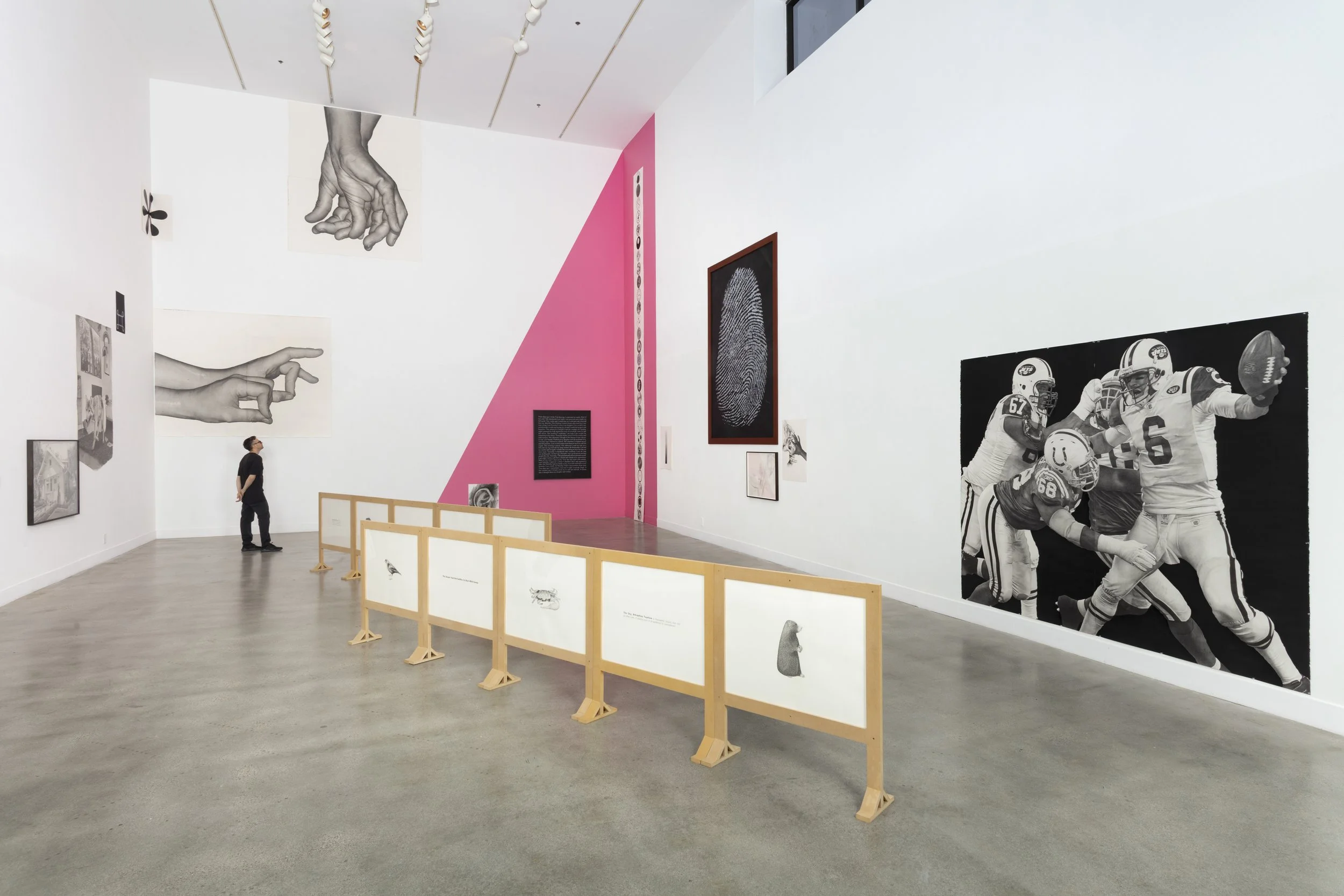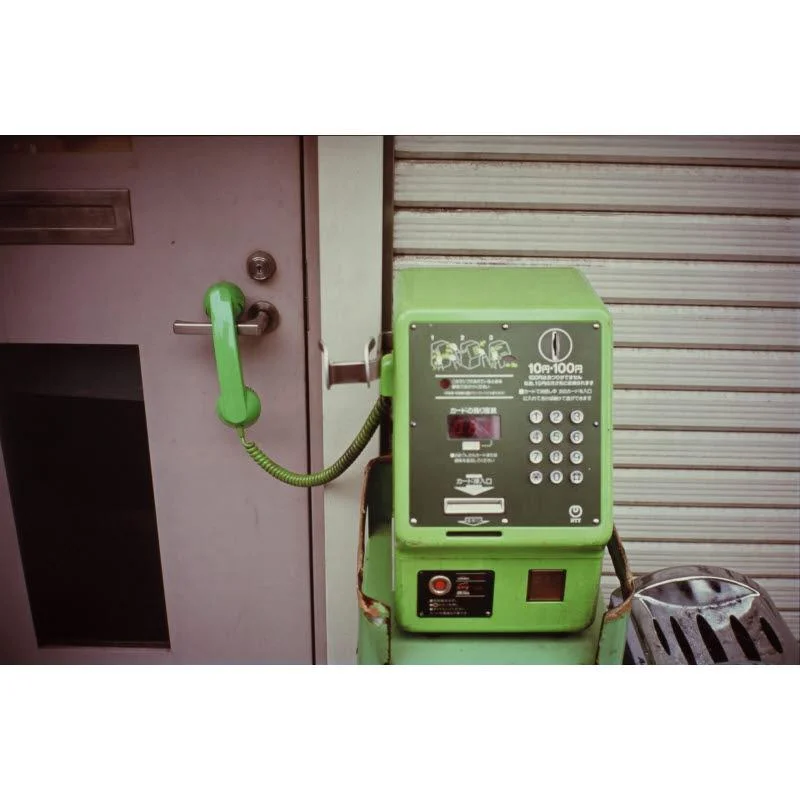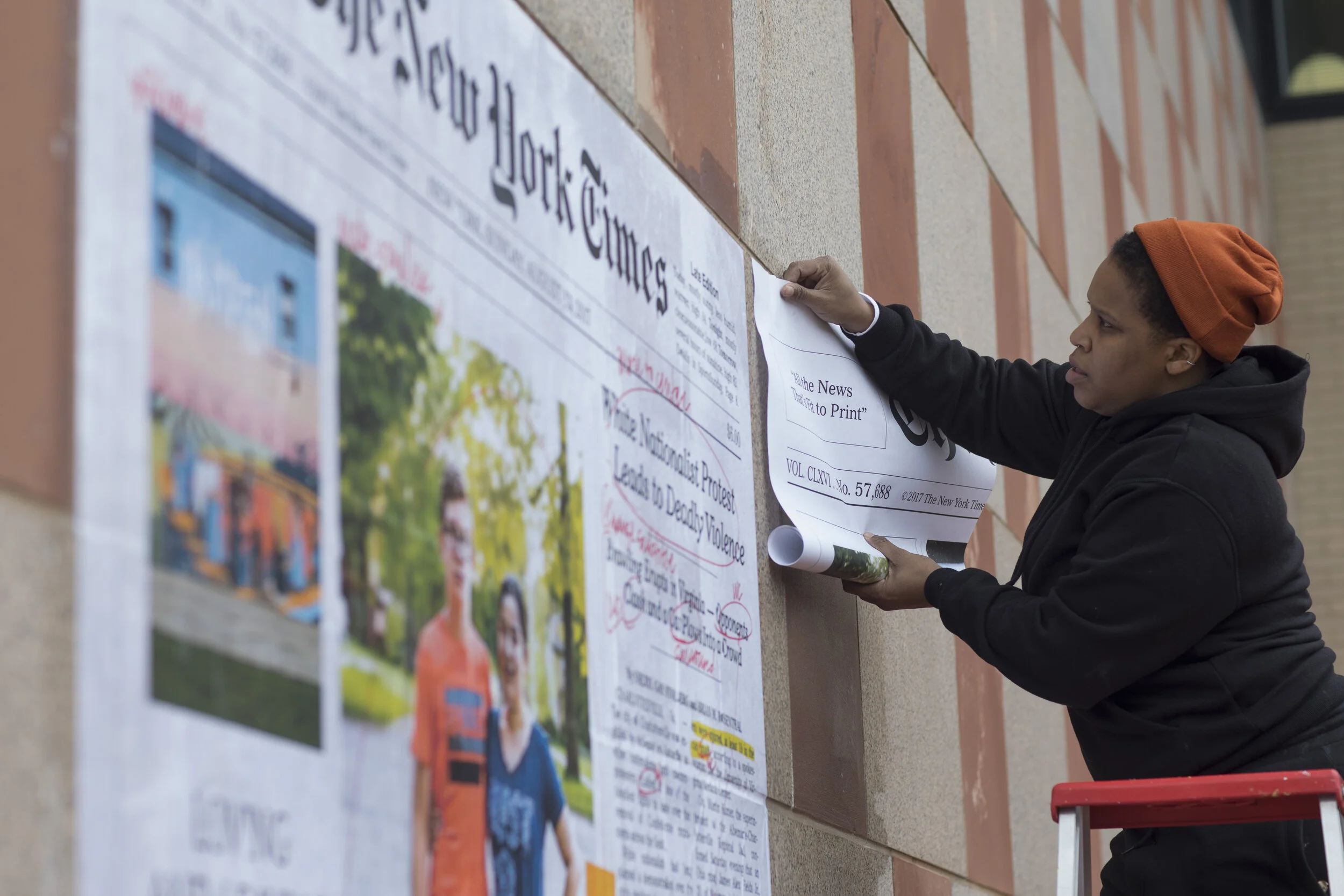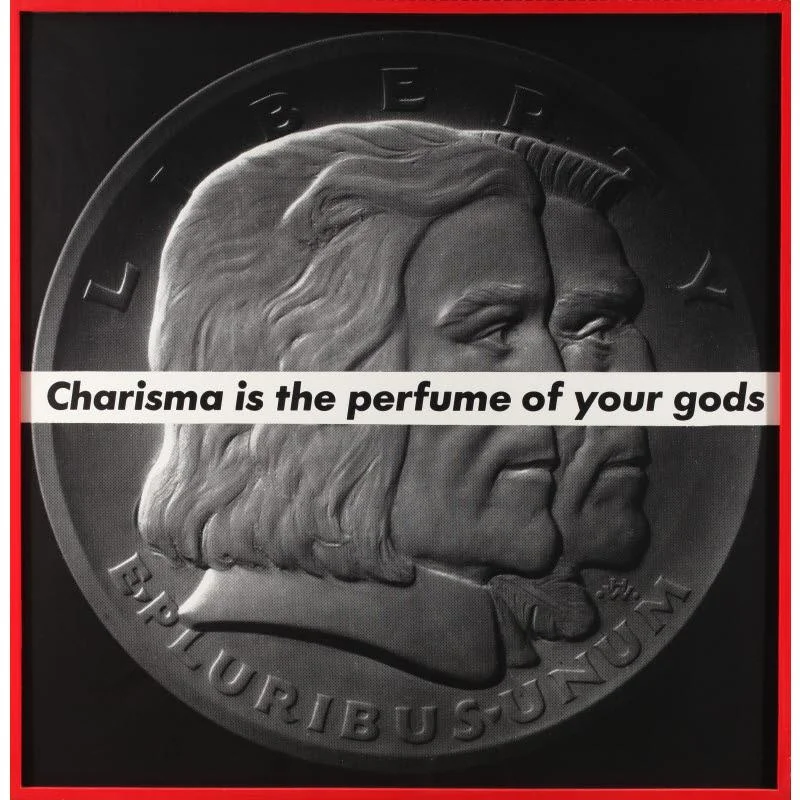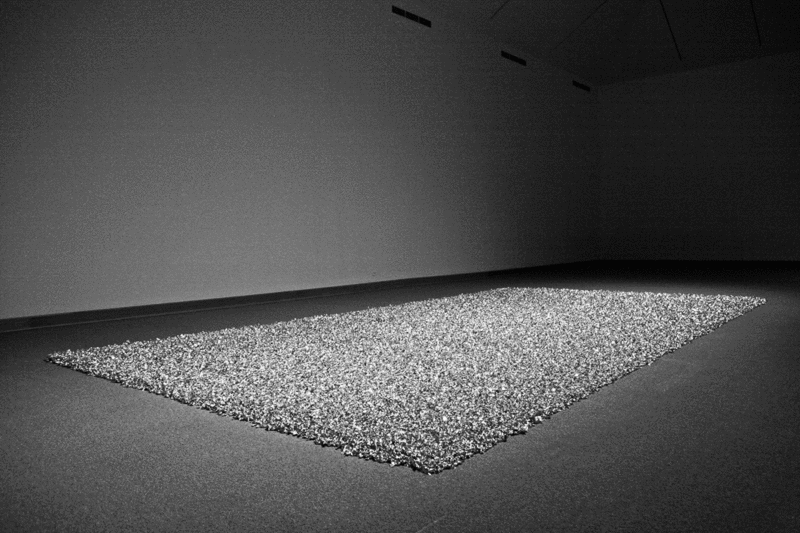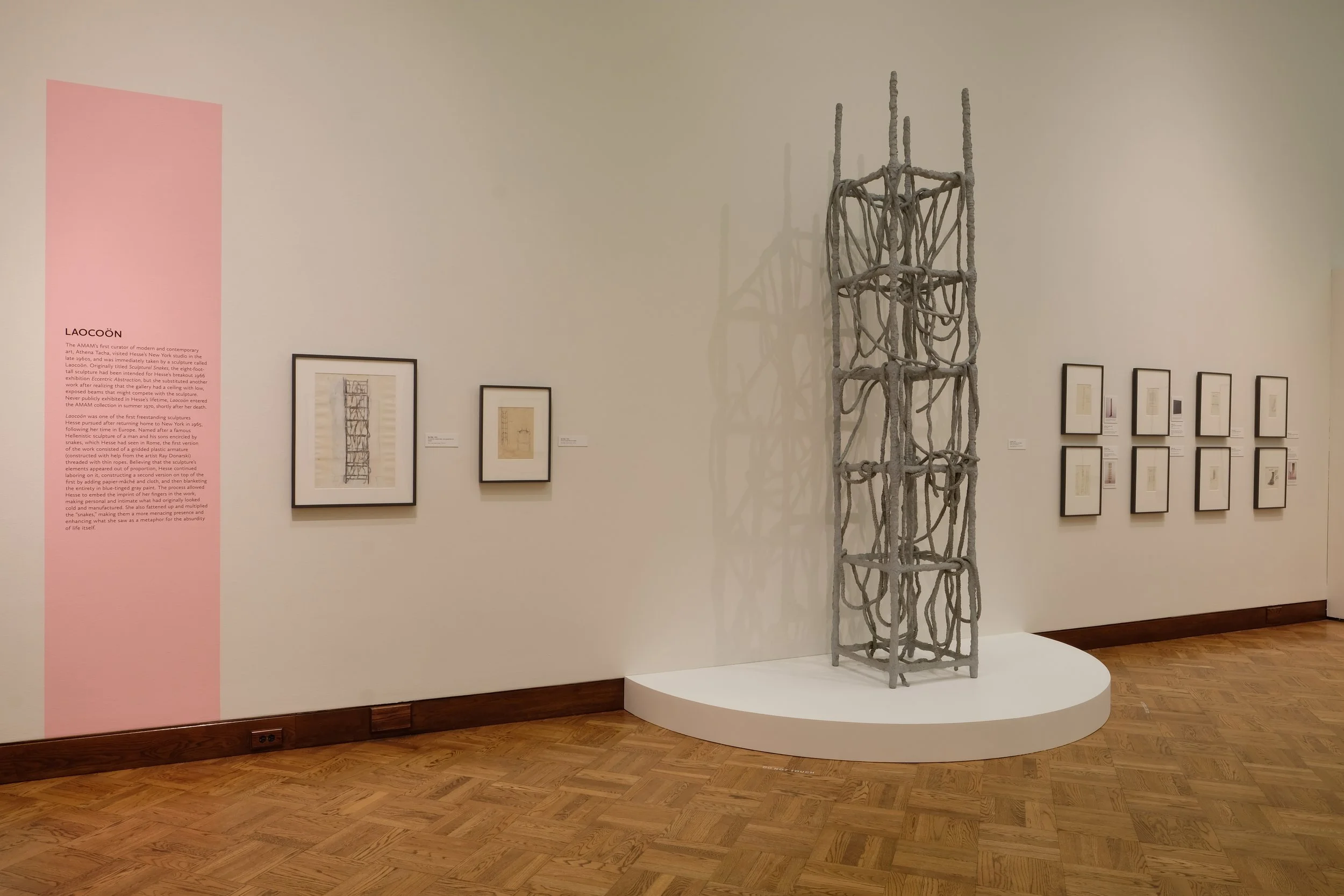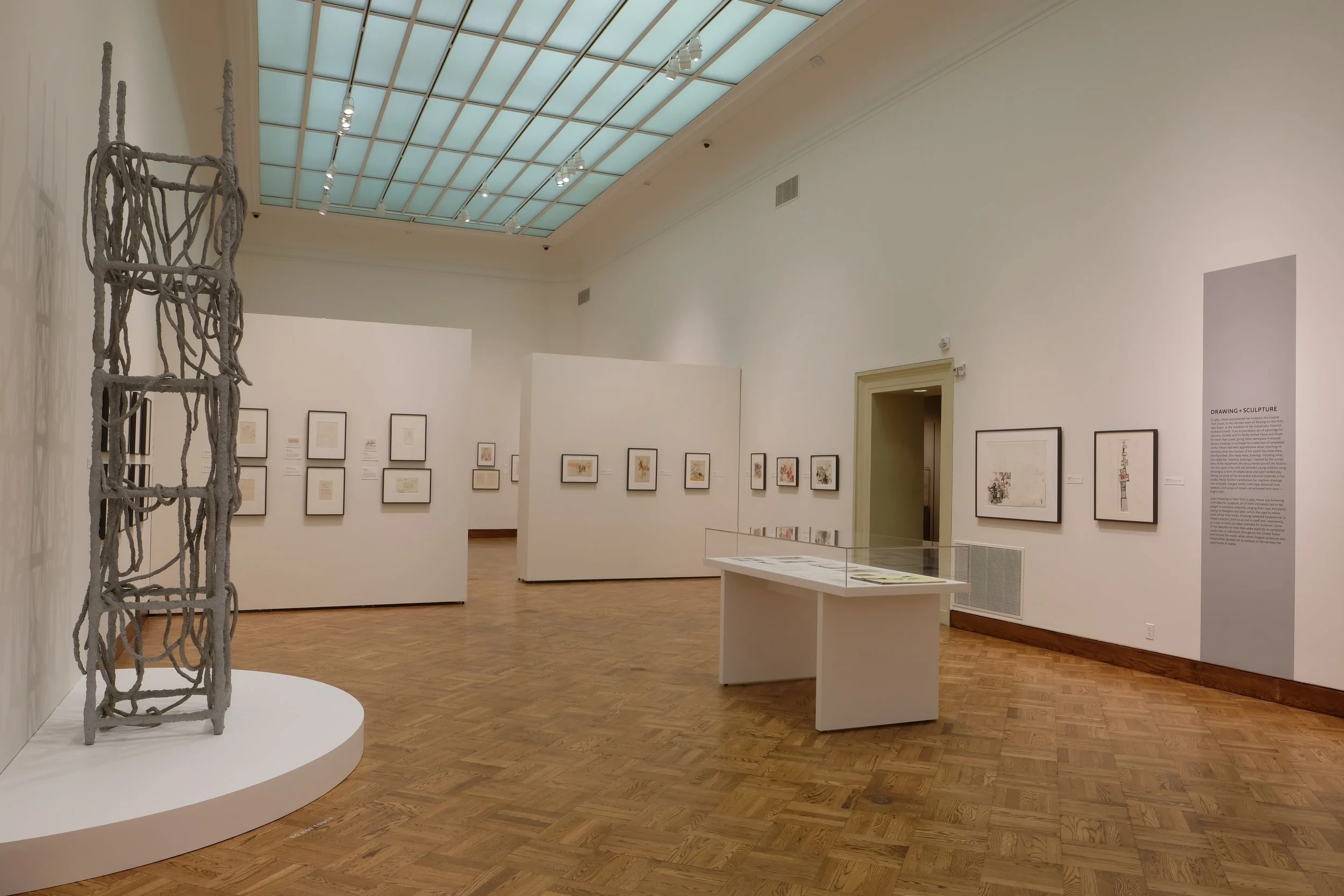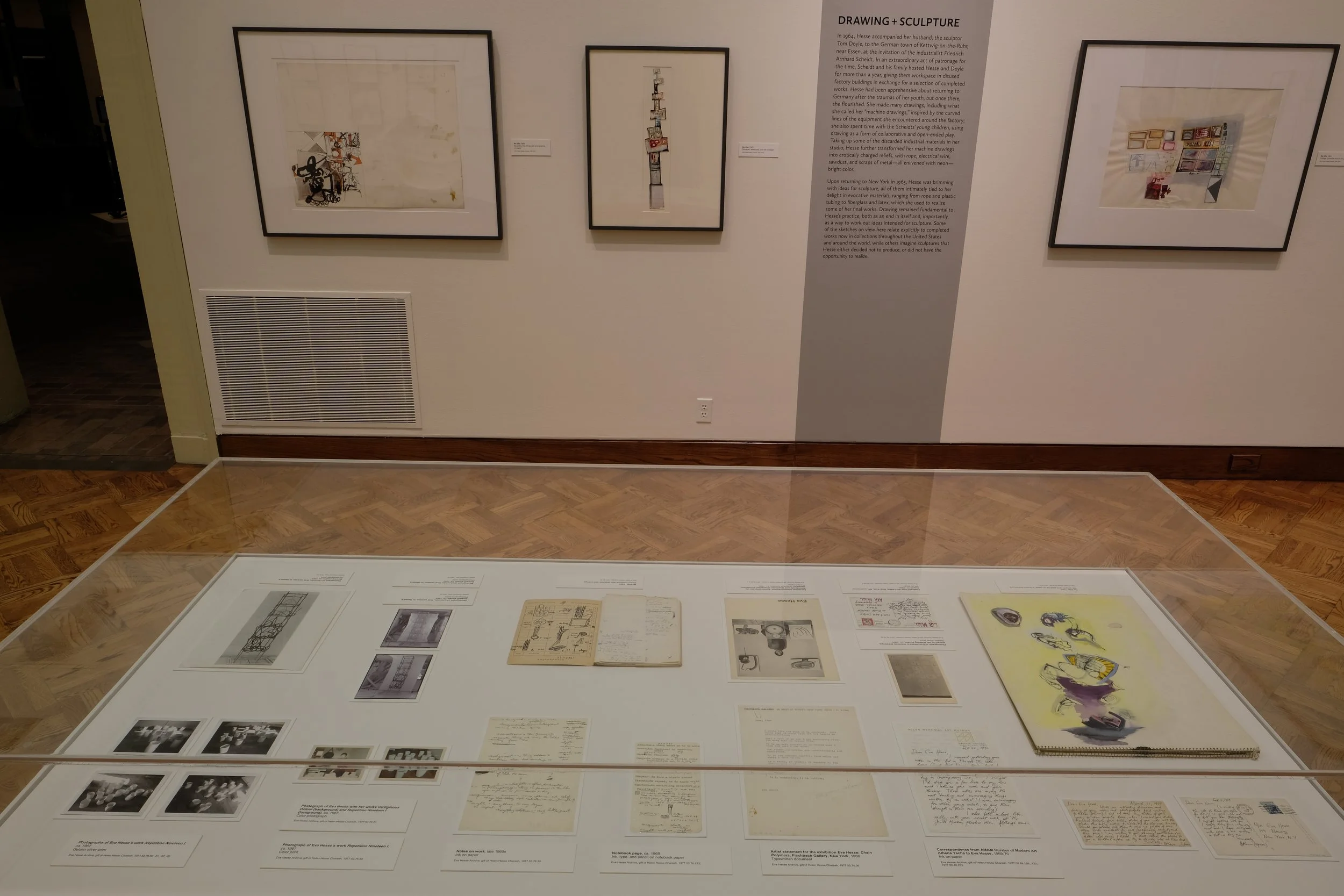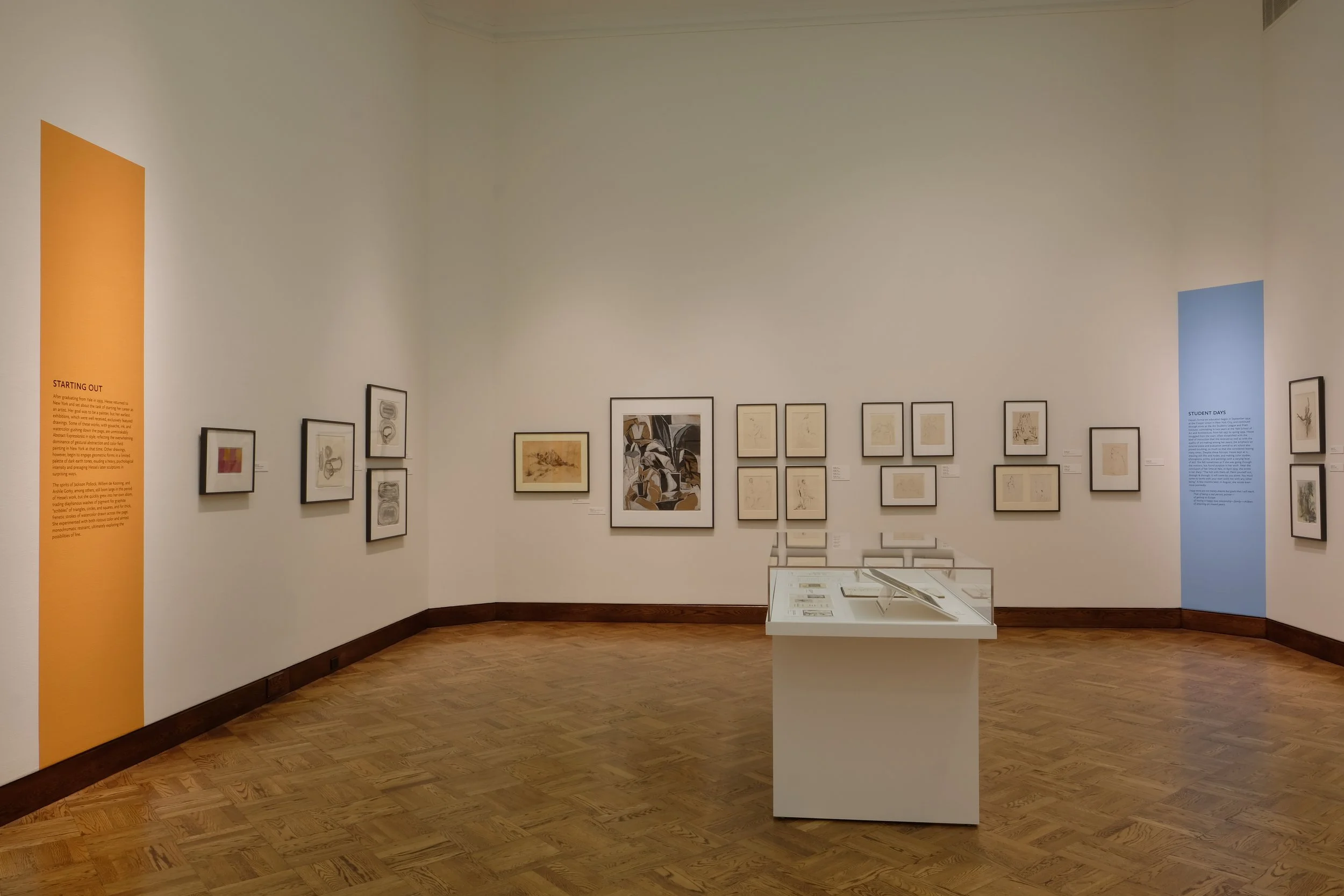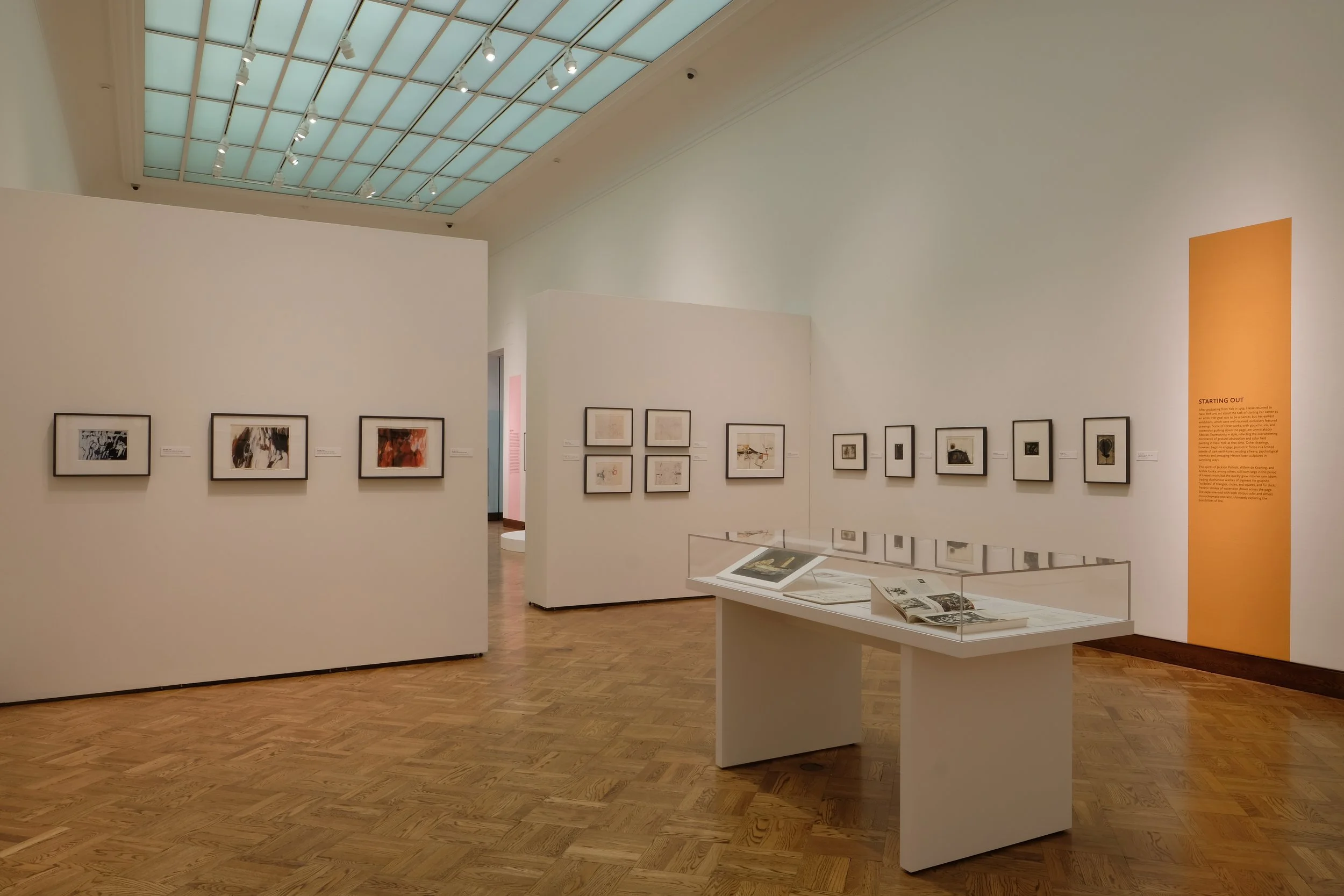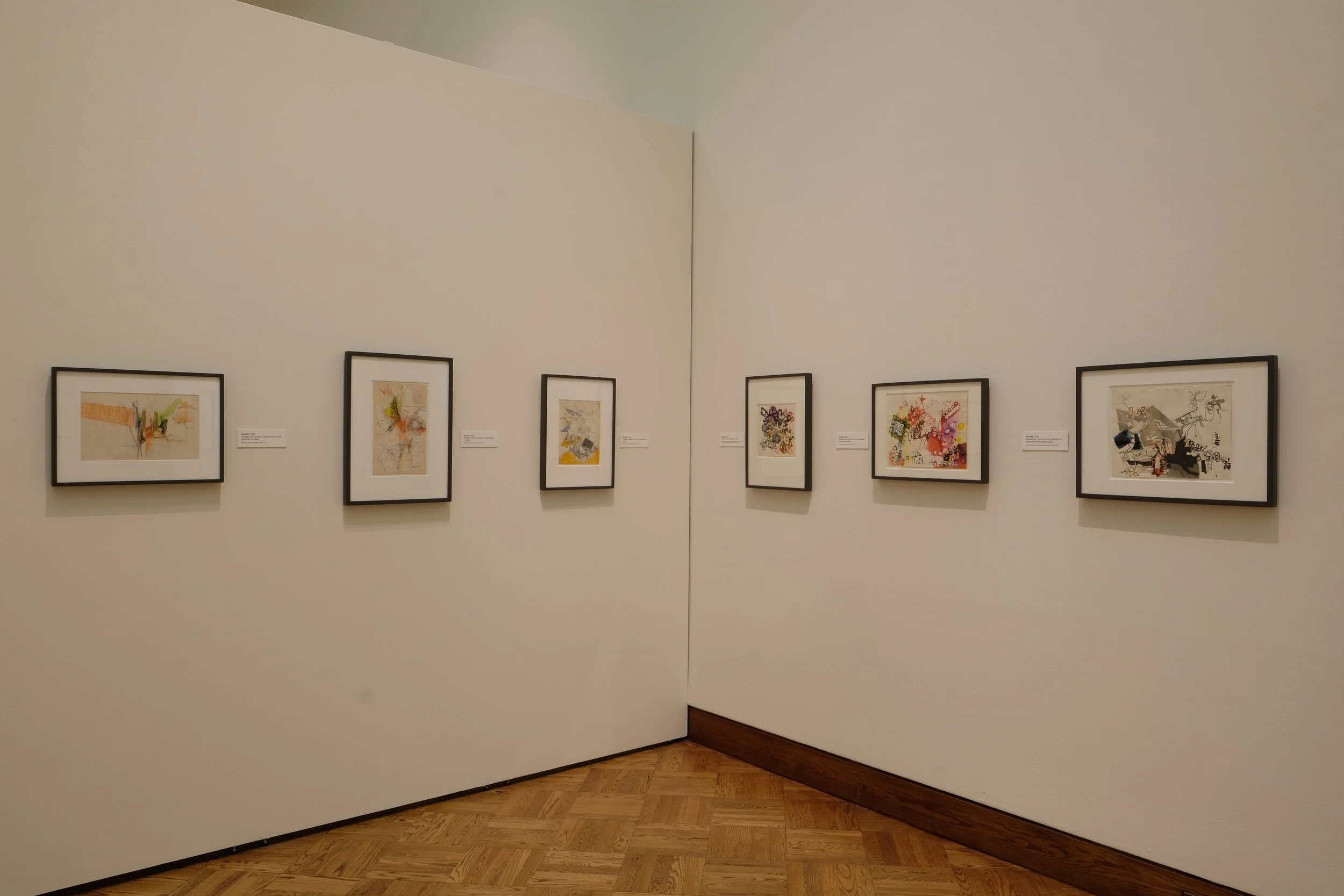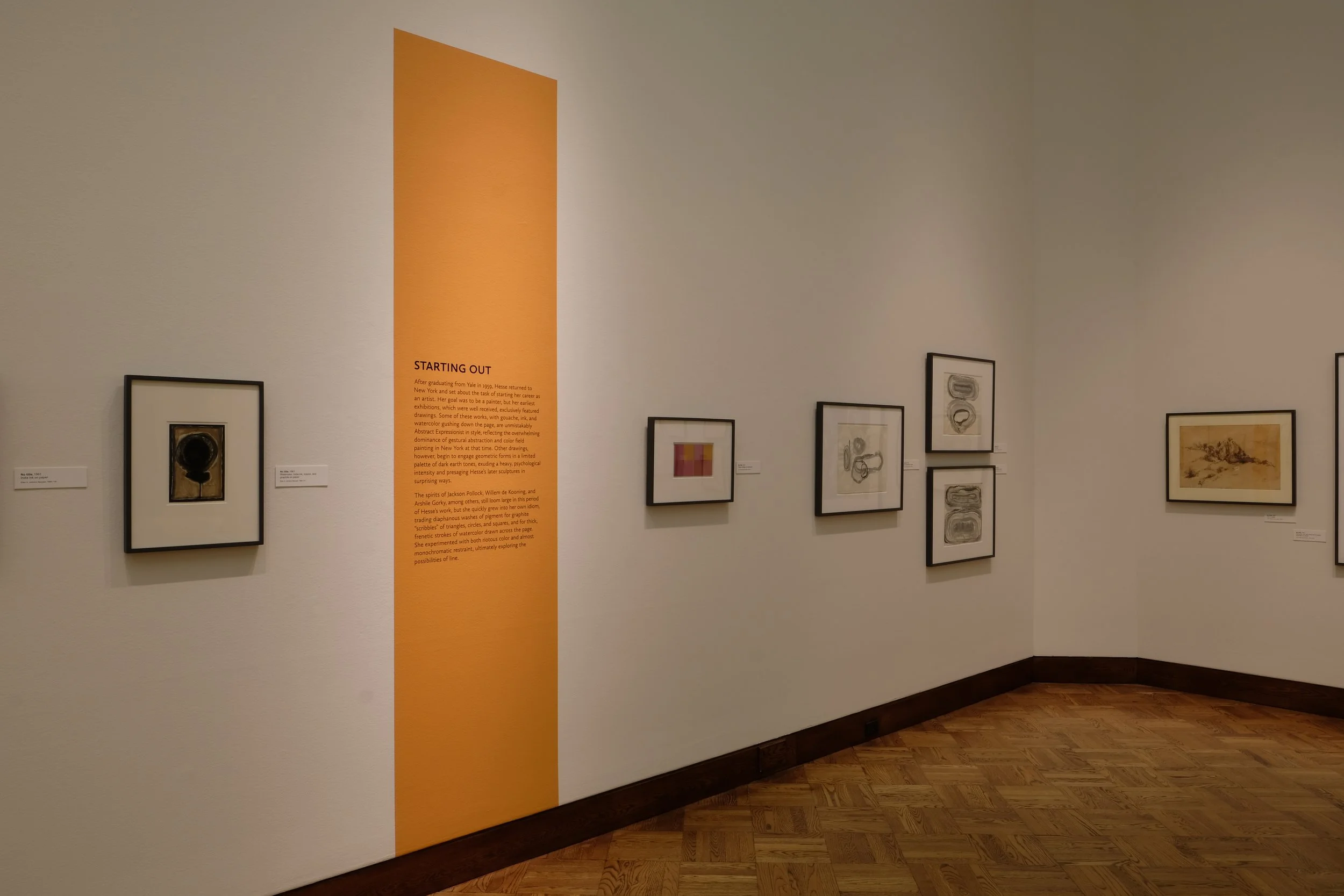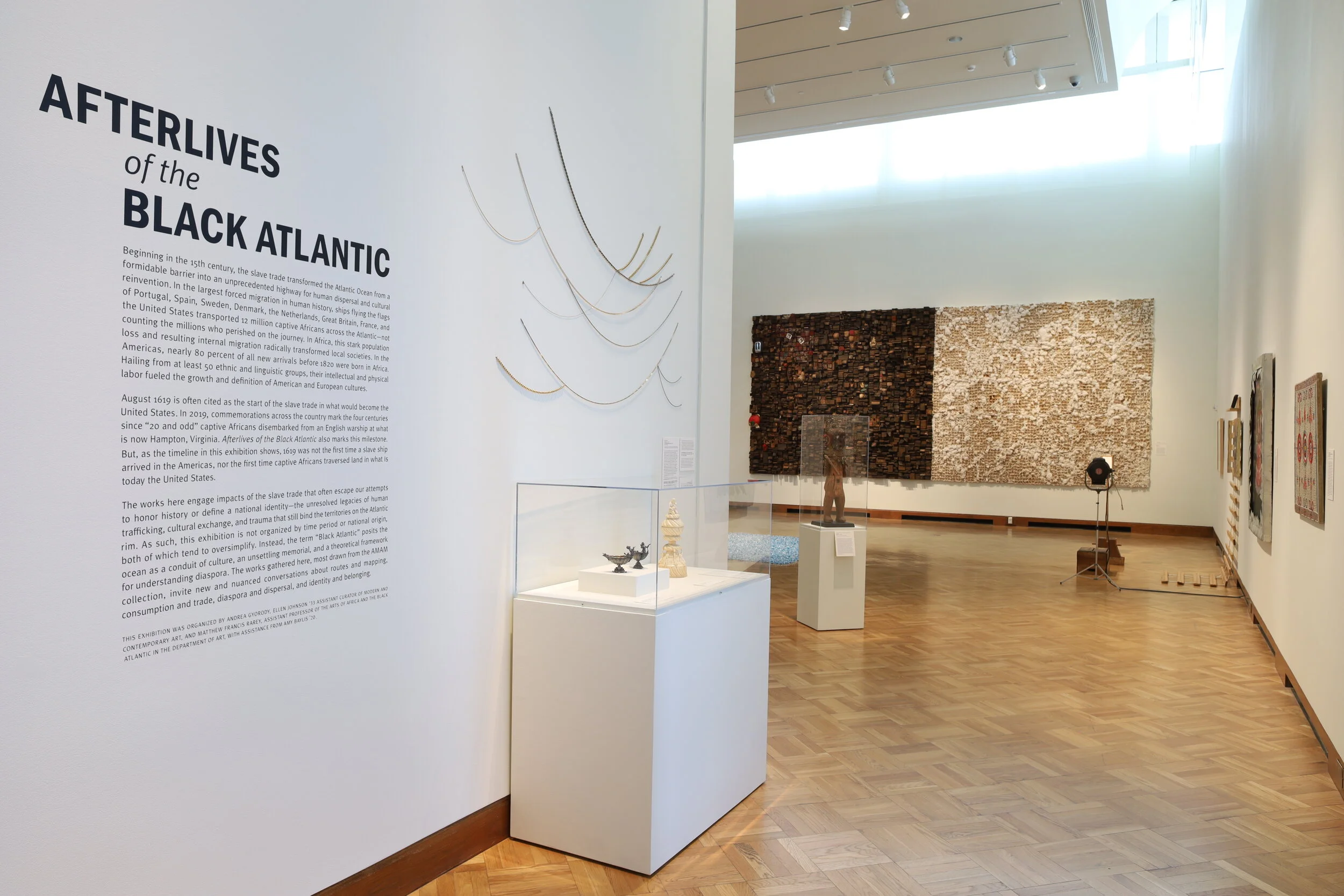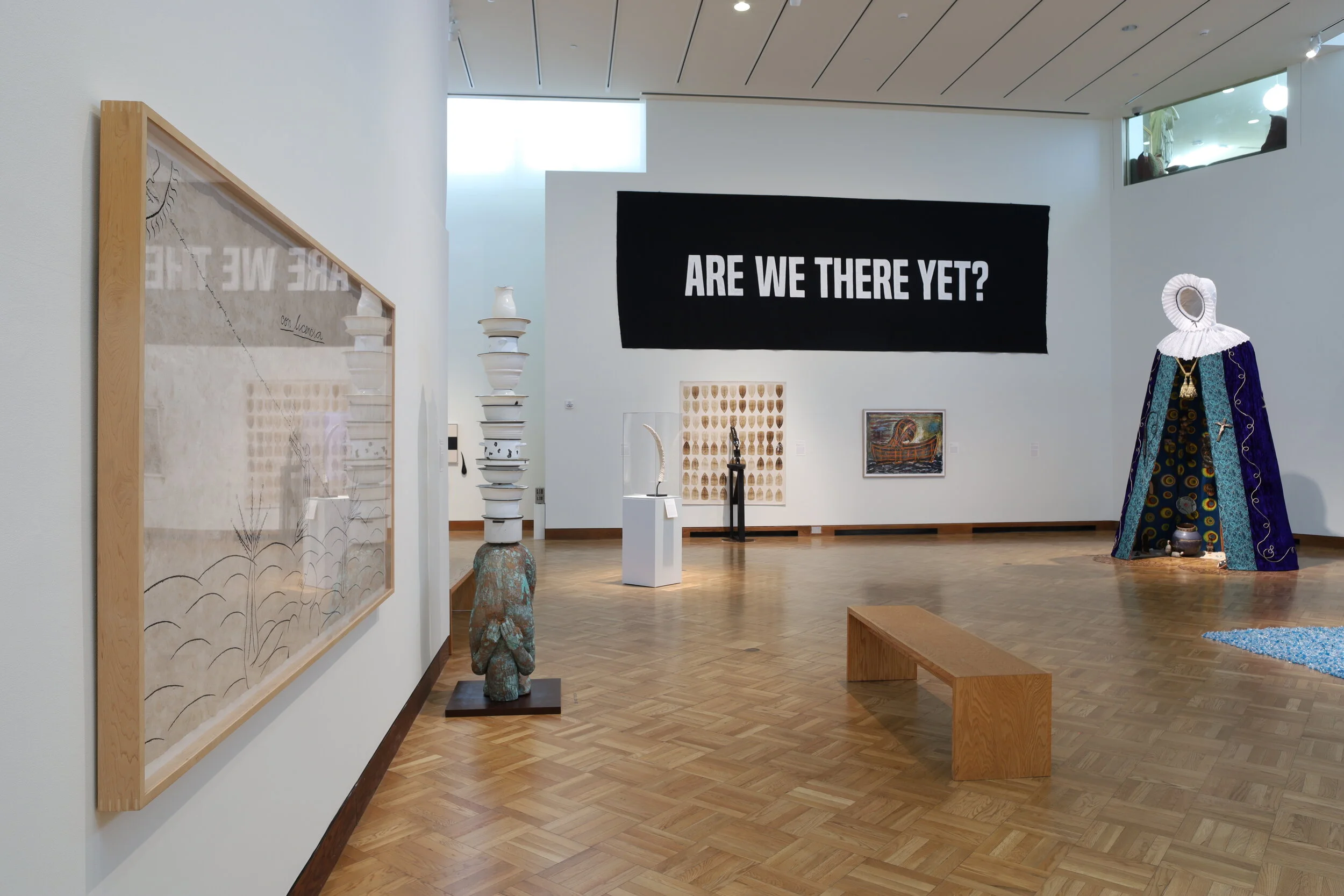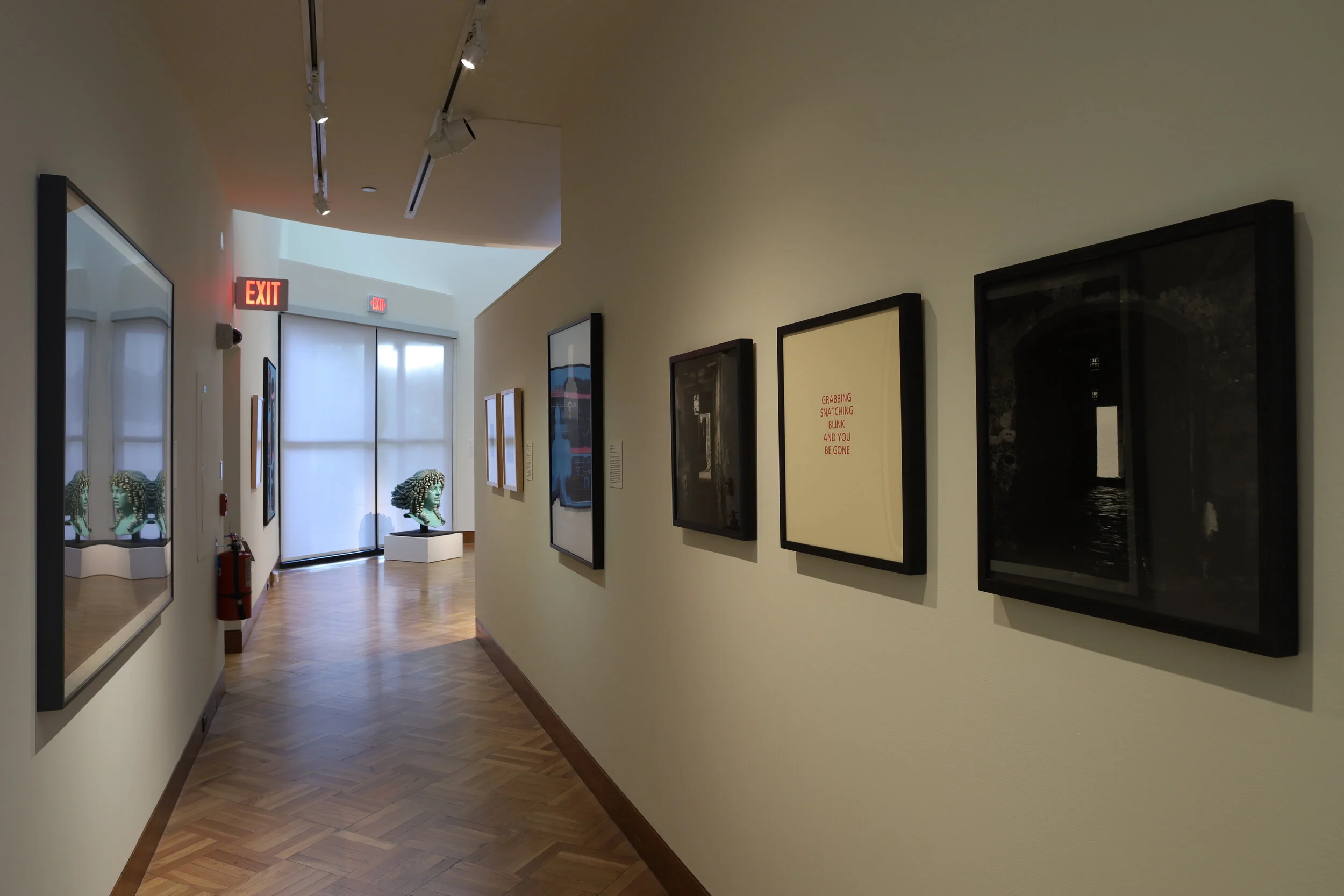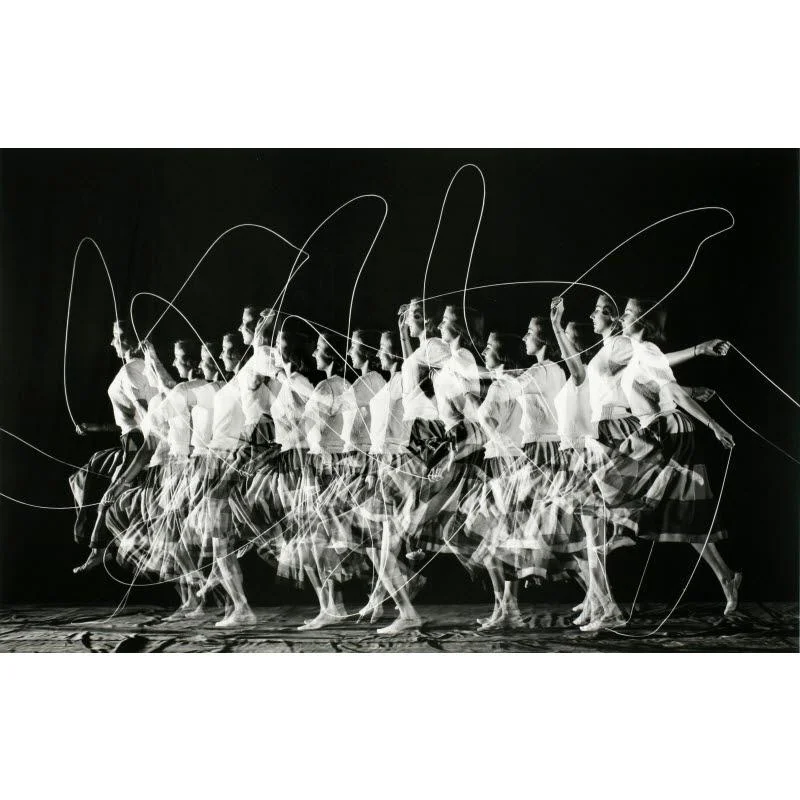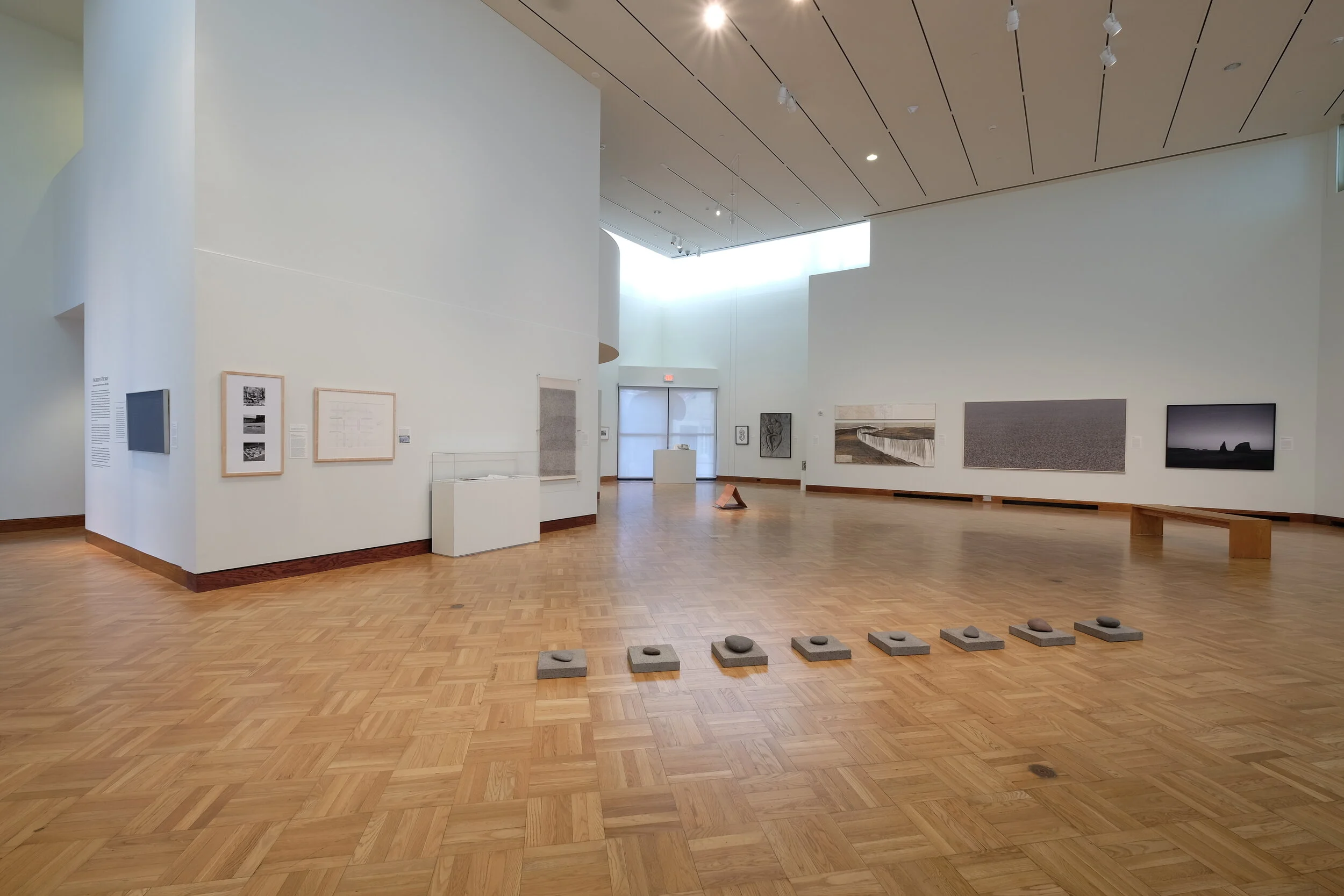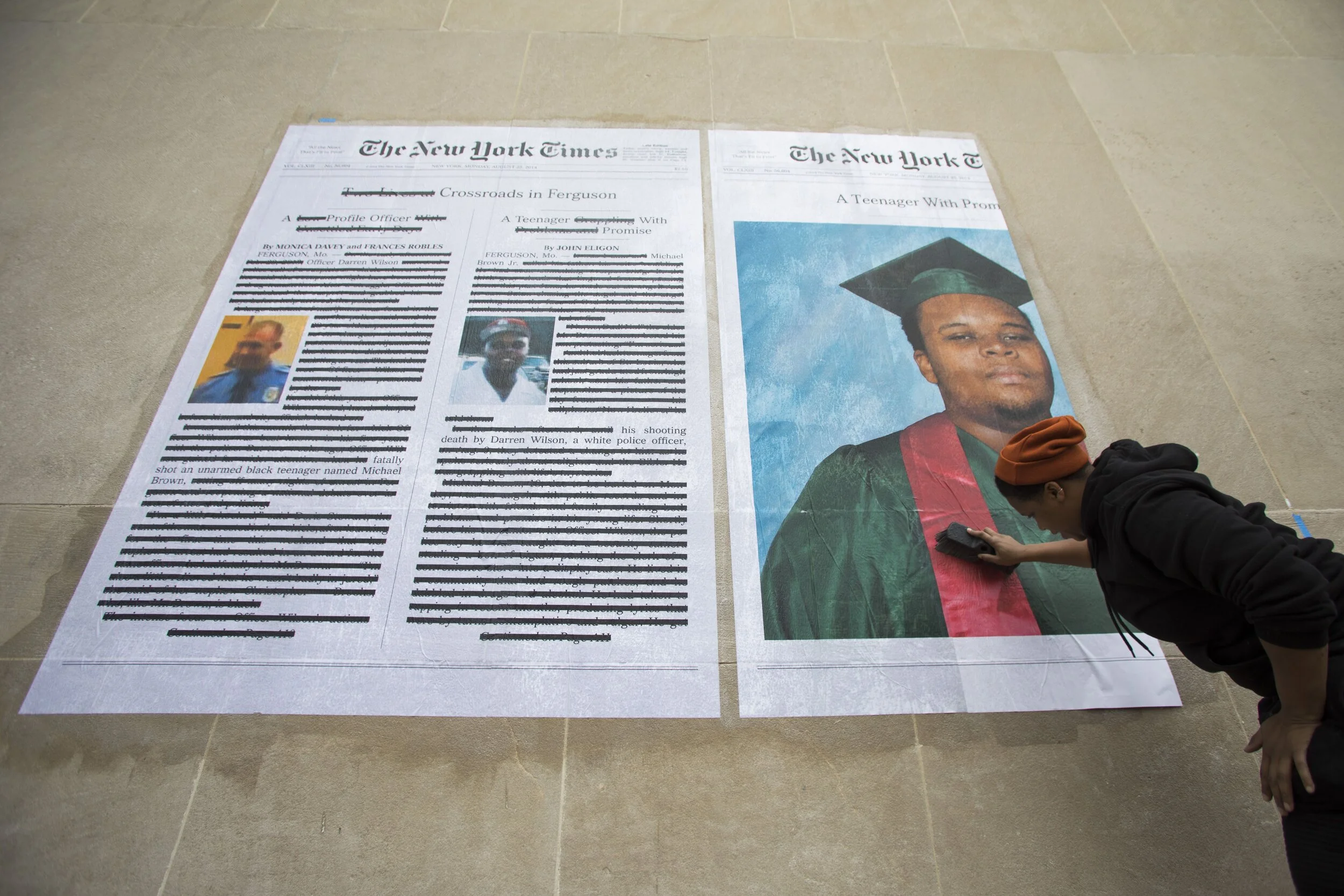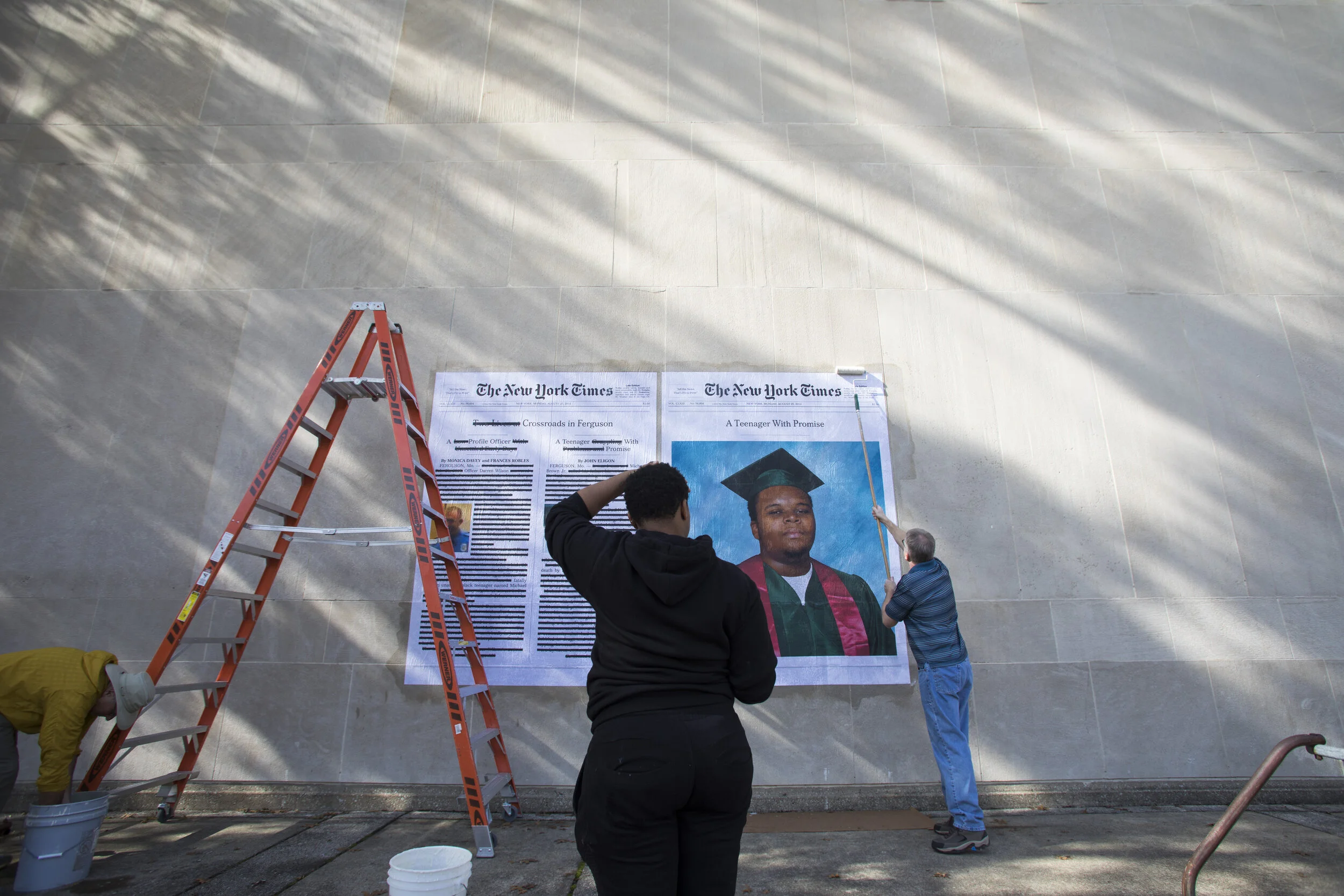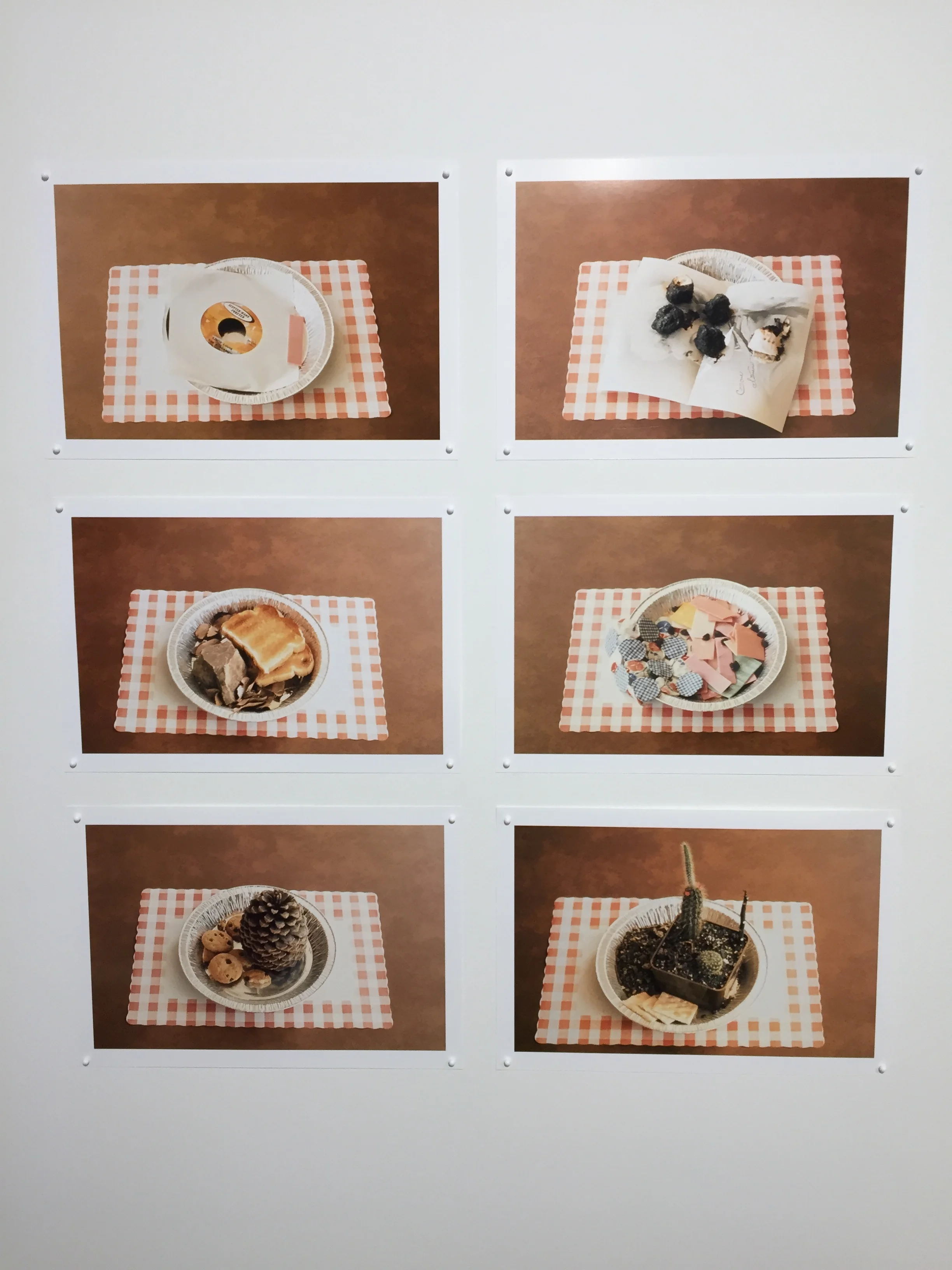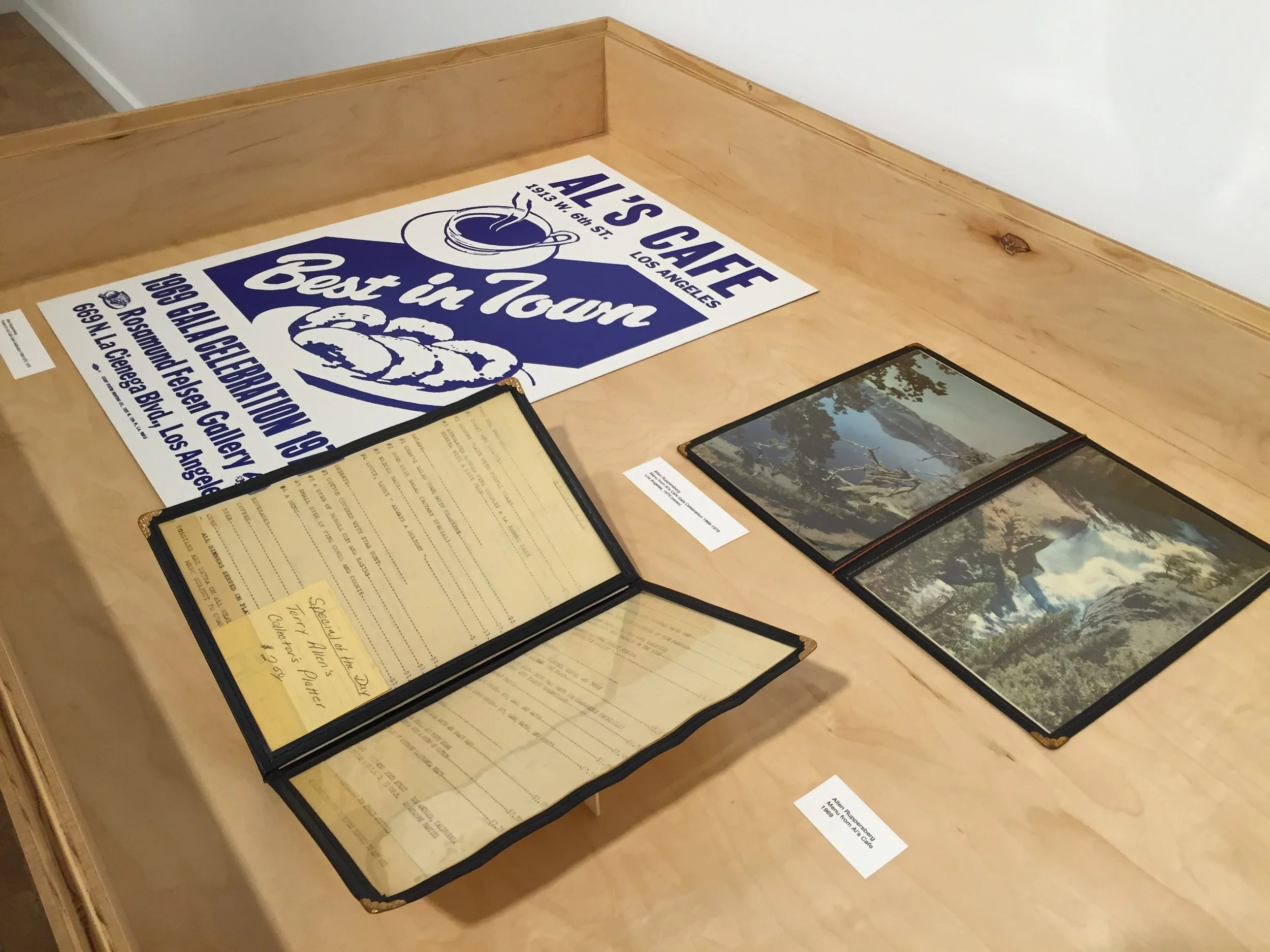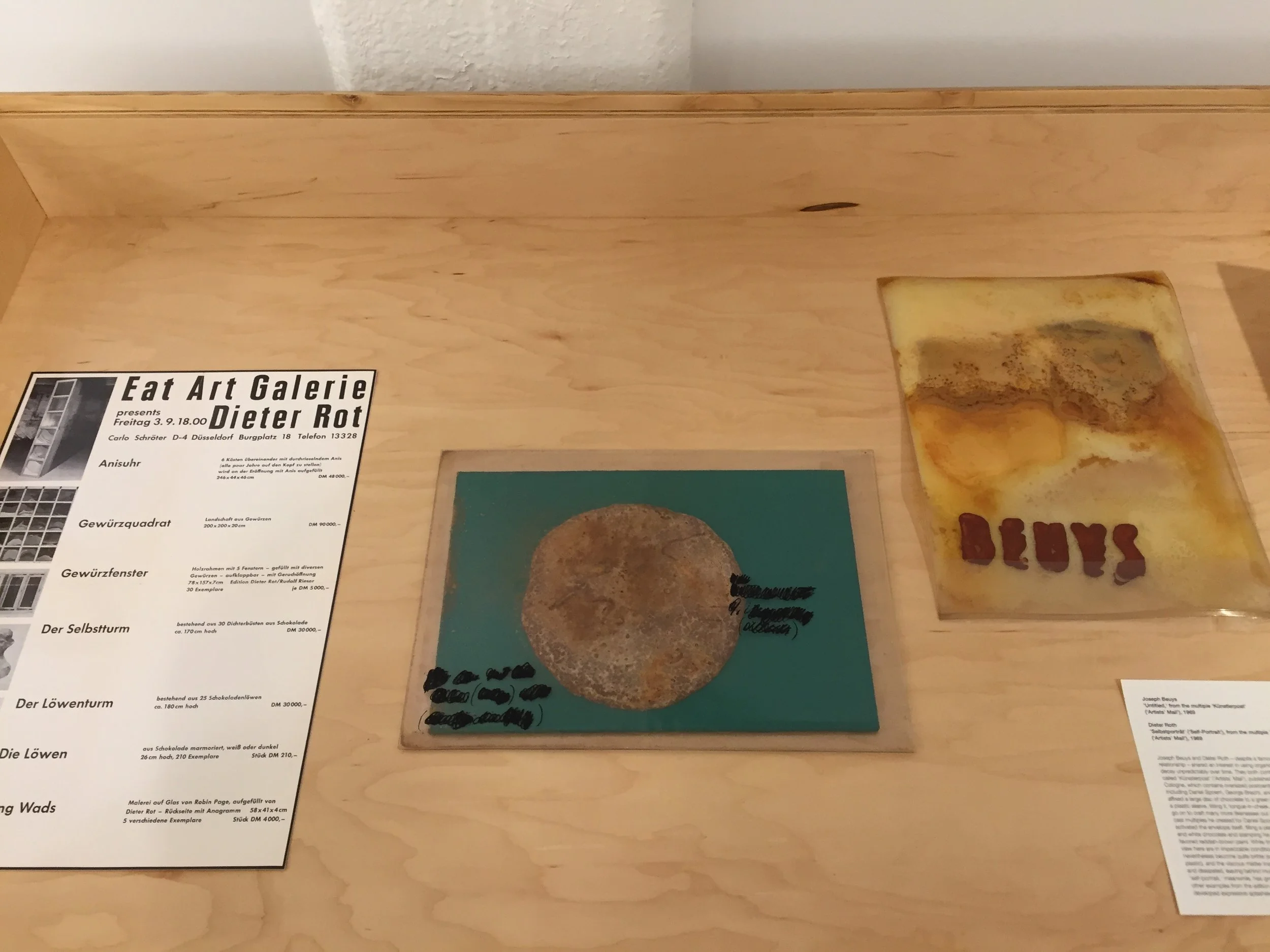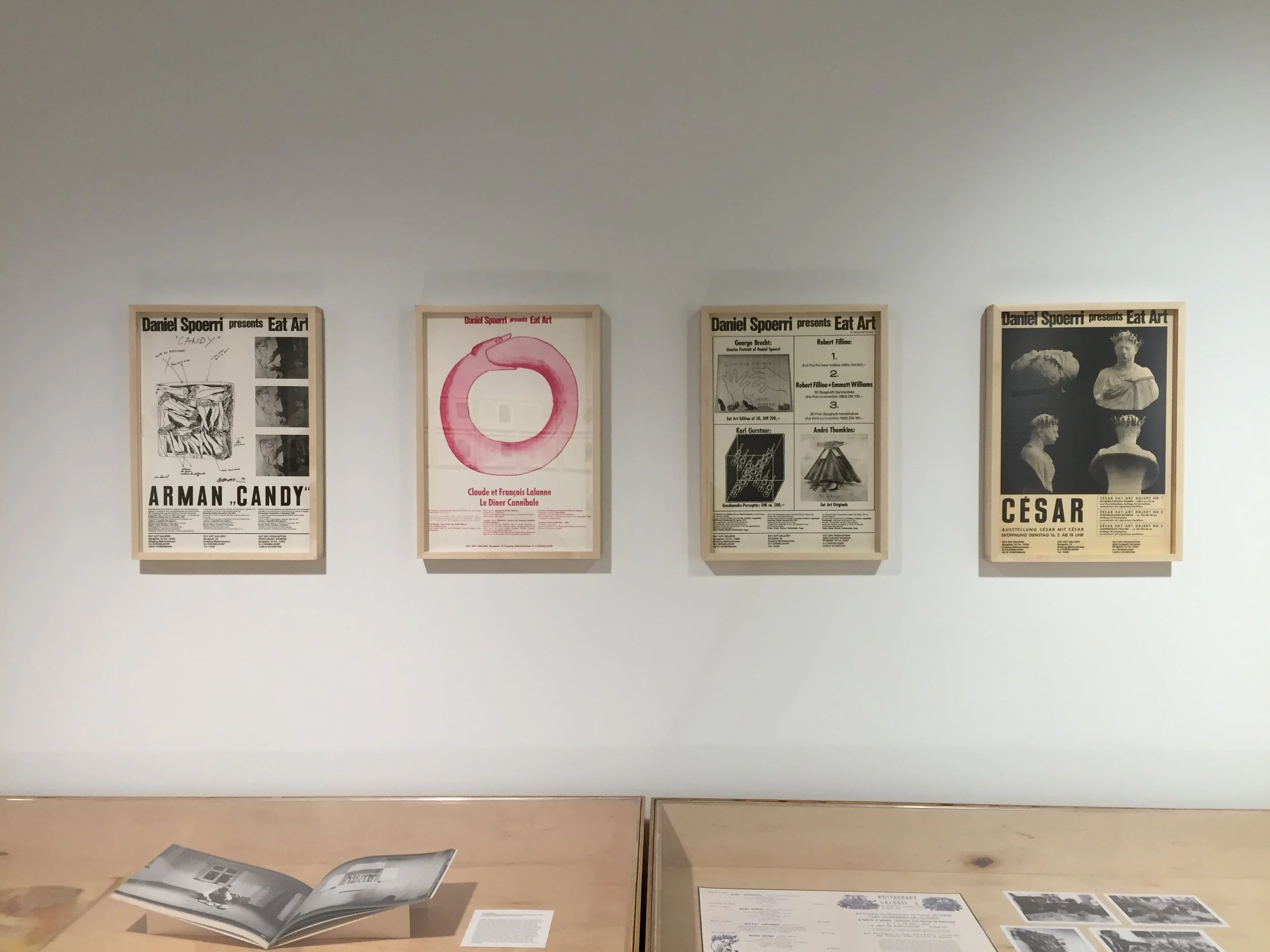Track 16 Gallery, Los Angeles
June 25 – September 12, 2021
On May 12, 2021, fans around the world celebrated what would have been artist Joseph Beuys’s 100th birthday. Across the German state of Nordrhein-Westfalen, where Beuys was born in 1921 and died in 1986, arts organizations large and small are hosting exhibitions and programs that pay homage to Beuys’s work as an artist, educator, and agitator deeply committed to what he called social sculpture—the notion that art’s greatest purpose is to function as a vehicle for political engagement and social healing.
Curated by art historian Andrea Gyorody, I Like LA and LA Likes Me: Joseph Beuys at 100 explores Beuys’s legacy in relation to kindred work being made today in Los Angeles. Beuys came to the US twice in 1974; he lectured in New York, Minneapolis, and Chicago, and returned later that year to New York to stage the performance I Like America and America Likes Me, for which he lived in a gallery for several days with a coyote. Though Beuys never made it to California, his work is well-represented in LA, primarily through his multiples—editioned objects and works on paper that Beuys conceived as vehicles for spreading his ideas as widely as possible.
This exhibition takes as its point of departure Track 16’s substantial collection of Beuys multiples, which includes iconic sculptural objects such as Sled (1970) and Telephone T-R (1974), alongside performance relics, readymades, fabricated objects, lithographs, and posters. The multiples featured in I Like LA and LA Likes Me relate to Beuys’s political and pedagogical projects, from the Free International University for Creativity and Interdisciplinary Research, an itinerant academy he co-founded in 1973, to 7000 Oaks, a permanent installation of 7000 trees and basalt stones planted between 1982 and 1987 in Kassel, Germany. The latter project, Beuys’s last major work, is a living testament to his dedication to environmental activism and a reminder of his supporting role in the formation of the German Green Party in 1980.
Arguing for Beuys’s continued relevance, I Like LA and LA Likes Me places his multiples—and the larger projects to which many are tethered—in dialogue with works by artists living and working in LA today. Though departing from Beuys’s legacy in many ways, these artists share some of his key sensibilities and extend them in new and crucially important directions.
Dialogue is embodied in Kandis Williams’s “idea maps,” which bear a resemblance to Beuys’s own blackboard drawings. Williams’s collage-like maps chart the complex network of ideas that run through her projects (including the rigorous readers she publishes through her Cassandra Press), citing elements of Greek mythology and critical thought that she interrogates and makes her own.
In wide-ranging interdisciplinary work, Candice Lin investigates forms of knowledge lost through the violence of colonialism and forced migration; often using organic plant matter, Lin creates drawings, sculptures, and installations that explore, among many other subjects, alchemy and homeopathy—both of which were crucial components of Beuys’s frequent invocations of Celtic culture and spirituality.
Shamanism also played a role in Beuys’s care for the environment and his emphasis on the land as a bridge between past, present, and future. Beatriz Cortez and rafa esparza center land in their work too, but with histories of colonial erasure, displacement, and exploitation at the fore. Their joint work Portal (2018), a floor-bound installation of adobe bricks that harbor a fledgling ceiba tree, points to ways the land can be a conduit to the ancients, in this case the Mayans, who held the ceiba to be sacred, and a portal to the Underworld.
Finally, veronique d’entremont shares Beuys’s interest in the possibilities of interspecies dialogue and collaboration, which manifests in d’entremont’s sculptural objects, videos, sound recordings, and installations made with the help of bees, animals that also recurred throughout Beuys’s oeuvre. The bees interact with, alter, and enliven autobiographical elements of d’entremont’s work, articulating an artistic practice radically open to nature’s direction.
ABOUT THE ARTISTS
JOSEPH BEUYS
Joseph Beuys was born in 1921 in Krefeld, Germany. In 1961 he was appointed professor of monumental sculpture at the Düsseldorf Art Academy, where he became an inspiring and charismatic figure for an emerging generation of German artists. During this period, he became a member of the newly founded Fluxus Group, an international network of artists from nearby Wuppertal. In the 1970s, his activities became explicitly politicised. He founded the Free International University (FIU) for Creativity and Interdisciplinary Research, as well as the Organisation for Direct Democracy through Referendum, and later became involved with the German Green Party. His monumental retrospective at the Solomon R. Guggenheim Museum, New York in 1979 established Beuys's international reputation. Since the artist's death in 1986, his work has been shown in numerous museum exhibitions around the world, including at the Museo Nacional Centro de Arte Reina Sofia, Madrid; Centre Pompidou, Paris; Tate Modern, London; National Gallery of Victoria, Melbourne; Kunstsammlung Nordrhein-Westfalen, Düsseldorf; Hamburger Bahnhof, Berlin; and the Scottish National Gallery of Modern Art, Edinburgh.
CANDICE LIN
Candice Lin (b. 1979, Concord, Massachusetts) is an interdisciplinary artist who works with installation, drawing, video, and living materials and processes, such as mold, mushrooms, bacteria, fermentation, and stains. Her work deals with the politics of representation and issues of race, gender and sexuality through histories of colonialism and diaspora. She received her MFA in New Genres at the San Francisco Art Institute in 2004 and her double BA in Visual Arts and Art Semiotics at Brown University in 2001. Her recent solo exhibitions include Guangdong Times Museum, Guangzhou, China; Govett-Brewster Art Gallery, New Plymouth, New Zealand; Walter Phillips Gallery, Banff Art Centre, Banff, Canada; François Ghebaly Gallery, Los Angeles; and the exhibition cycle A Hard White Body at Bétonsalon, Paris; Portikus, Frankfurt; and the Logan Center for the Arts, University of Chicago. She will present a solo exhibition at the Walker Art Center in Minneapolis in August 2021. Lin has been included in prominent biennials including the 2020-2021 Gwangju Biennial; 2018 Taipei Biennale; the 2018 Athens Biennale; and Made in L.A. 2018, Hammer Museum, Los Angeles. She is the recipient of several residencies, grants and fellowships, including the Joan Mitchell Award (2019), Davidoff Art Residency (2018), Louis Comfort Tiffany Award (2017), and Smithsonian Artist Research Fellowship (2009). She is Assistant Professor of Art at University of California Los Angeles.
RAFA ESPARZA
rafa esparza (b.1981, Los Angeles) is a multidisciplinary artist whose work reveals his interests in history, personal narratives, and kinship, his own relationship to colonization, and the disrupted genealogies that it produces. Recent solo exhibitions have been held at Commonwealth and Council, Los Angeles (2021); MASS MoCA (2019); ArtPace, San Antonio (2018); Atkinson Gallery, Santa Barbara (2017); Ballroom Marfa (2017); and Los Angeles Contemporary Exhibitions (2015). esparza has performed at art institutions including Performance Space New York and the Ellipse, Washington, D.C. (2019); Institute of Contemporary Art, Los Angeles (2018); Museum of Contemporary Art, Los Angeles (2018); the Whitney Museum of American Art, New York (2017); Hammer Museum, Los Angeles (2016); and Clockshop, Bowtie Project, Los Angeles (2014). Select group shows were held at Jeffrey Deitch, Los Angeles (2021); Regen Projects, Los Angeles (2021); San Diego Art Institute (2019); DiverseWorks, Houston (2019); Craft Contemporary, Los Angeles (2019); GAMMA Galeria, Guadalajara (2019); Bemis Center for Contemporary Art, Omaha (2017); Whitney Museum of American Art, New York (2017); LA><ART (2017), Los Angeles; PARTICIPANT, INC., New York (2016); and Hammer Museum, Los Angeles (2016). esparza is a recipient of the Boffo Fire Island Residency (2021), United States Artists Fellowship (2021), Montalvo Arts Center Lucas Artists Fellowship (2020), ArtPace International Artist Residency (2018), Louis Comfort Tiffany Award (2017), Rema Hort Mann Foundation Emerging Artist Grant (2015), California Community Foundation Fellowship for Visual Arts (2014), California Community Fund Fellowship for Visual Artists (2014), and Art Matters Foundation Grant (2014). esparza's work is in the collections of the Solomon R. Guggenheim Museum, New York; KADIST, San Francisco; Los Angeles County Museum of Art; Hammer Museum, Los Angeles; Vincent Price Art Museum, Monterey Park, CA; and Whitney Museum of American Art, New York.
BEATRIZ CORTEZ
Beatriz Cortez (b. 1970, San Salvador, El Salvador; lives and works in Los Angeles) received an MFA from the California Institute of the Arts, and a Ph.D. in Literature and Cultural Studies from Arizona State University. Cortez’s work explores simultaneity, life in different temporalities, and different versions of modernity, particularly in relation to memory and loss in the aftermath of war and the experience of migration, and in relation to imagining possible futures. She has had solo exhibitions at Craft Contemporary, Los Angeles (2019); Clockshop, Los Angeles (2018); Vincent Price Art Museum, Los Angeles (2016); Monte Vista Projects, Los Angeles (2016); and Centro Cultural de España de El Salvador (2014), among others. Cortez has participated in group exhibitions at 18th Street Arts Center, Santa Monica, CA (2020); Museum of Modern and Contemporary Art, Seoul, South Korea (2020); Henry Art Gallery, Seattle (2019); Ballroom Marfa, TX (2019); Hammer Museum, Los Angeles (2018); BANK/MABSOCIETY, Shanghai, China (2017); Whitney Museum of American Art, New York (2017); Centro Cultural Metropolitano, Quito, Ecuador (2016); and Los Angeles Contemporary Exhibitions (2016). Cortez is the recipient of the Artadia Los Angeles Award (2020), the inaugural Frieze Arto LIFEWTR Sculpture Prize (2019), the Emergency Grant from the Foundation of Contemporary Arts (2019), the Rema Hort Mann Foundation Emerging Artist Grant (2018), the Artist Community Engagement Grant (2017), and the California Community Foundation Fellowship for Visual Artists (2016). Her work is currently on view in Intergalactix: against isolation/contra el aislamiento at Los Angeles Contemporary Exhibitions, through August 14, 2021.
VERONIQUE D’ENTREMONT
Veronique d’entremont (they/them) is a trans-disciplinary artist whose practice spans devotional sculpture, audio installation, video and performance. They maintain an ongoing, inter-species collaboration with a feral colony of honeybees they claim to be the earthly manifestation of their deceased mother. veronique descends from a line of Sicilian women who are either blessed with spiritual gifts or cursed with bi-polar disorder, depending upon who you ask. To make sense of this legacy and the resulting suicide of their own mother, veronique infuses personal documentary with elements of magical realism, using their work as a medium for building empathy, healing from inter-generational trauma and challenging notions of otherness. Through creative myth-making, veronique seeks pathways toward healing our relationships to our environment, to each other and to ourselves. The artist looks to stories from early Christian mysticism, Sicilian folk magic and other earth-based practices for ways we may reimagine our attitudes toward neurodiversity and claim queer ancestry with human and non-human kin. Veronique’s solo exhibitions include Commonwealth and Council (Los Angeles), The Berwick Research Institute (Boston), and SPACES Cleveland, and public artworks commissioned by The Institute for Contemporary Art Los Angeles (ICA LA) and Los Angeles Nomadic Division (LAND). Veronique has been supported by numerous awards and residencies including a Joan Mitchell Fellowship and residency at the Joan Mitchell Center.
KANDIS WILLIAMS
Kandis Williams (b. 1985, Baltimore, Maryland) has had recent solo shows at Night Gallery, Los Angeles; KW Institute for Contemporary Art, Berlin; and Ficken 3000, Berlin, Germany. In Fall 2020, the Institute for Contemporary Art at Virginia Commonwealth University opened Kandis Williams: A Field, a multi-stage solo exhibition curated by Amber Esseiva, which will run through Summer 2021 as part of the museum’s Provocations commission series. Williams is featured in the 2020 edition of the Made in LA biennial at the Hammer Museum and Huntington Libraries. She is the recipient of the 2021 Grants to Artists award, presented by the Foundation for Contemporary Arts, New York. Beyond her creative work, Williams has an active curatorial and pedagogical practice, and runs Cassandra Press. Her performances have been mounted in clubs and institutions across the world. She is currently a visiting faculty member at the California Institute of the Arts. Williams lives and works in Los Angeles.
